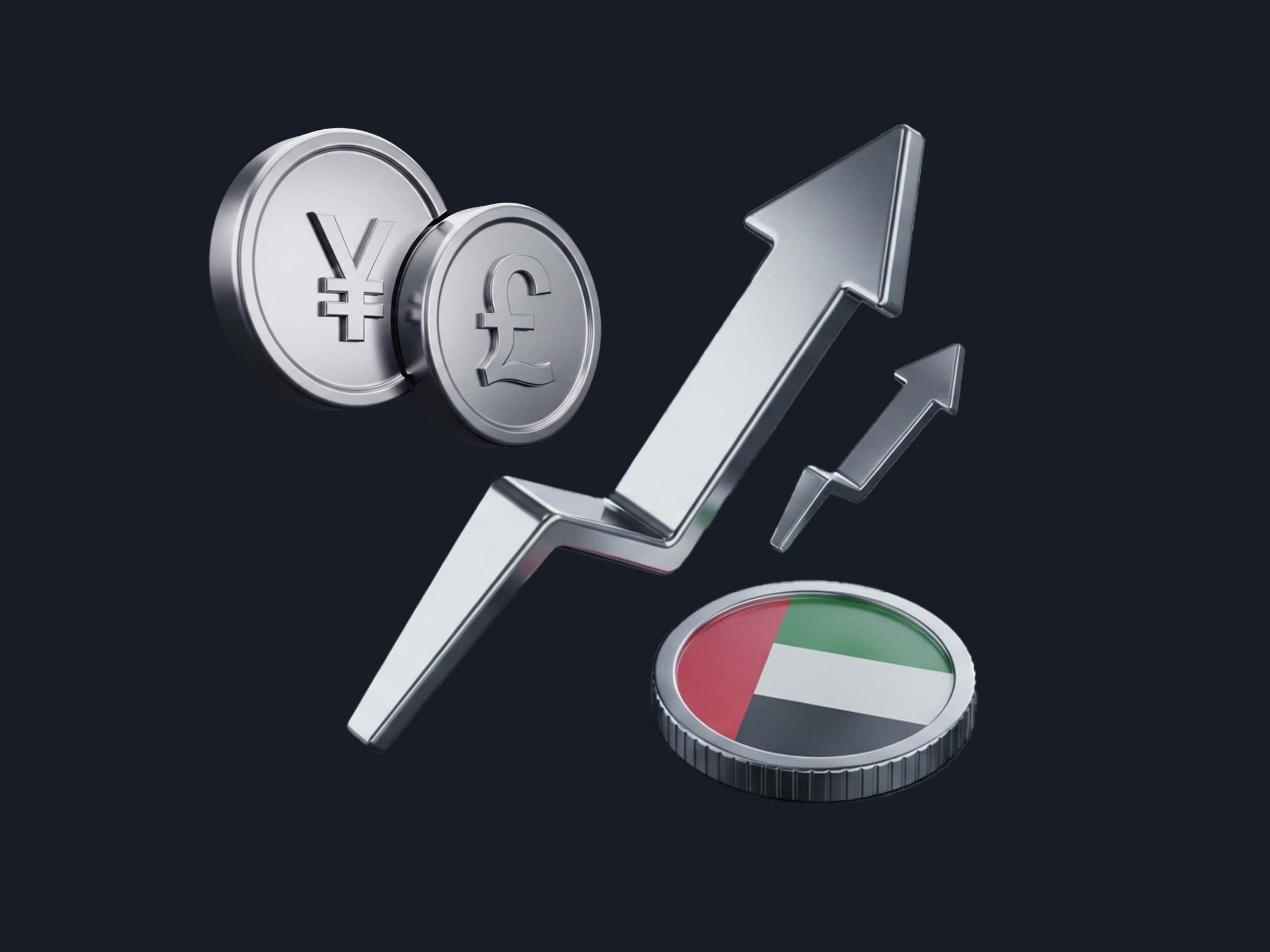
Quick Summary
- A solid strategy is key for success in the UAE’s fast-growing forex market—don’t trade without one.
- Common forex trading strategies include trend-following, range trading, scalping, and breakout trading.
- Trend-following rides waves in one direction; range trading exploits sideways markets; scalping catches small, fast price moves; breakout trading chases strong moves after price breaks out.
- Use risk management: always set stop-losses and never risk more than 1–2% per trade.
- The best strategy matches your trading style, personality, and UAE market hours—be flexible and adapt to market conditions.
The UAE is quickly becoming a regional hub for forex trading. With high internet penetration, a modern regulatory environment, and a growing appetite for financial independence, more UAE residents are exploring online trading.
Whether you’re in Dubai, Abu Dhabi, or anywhere in between, you have access to global currency markets 24/5 - right from your phone or laptop. Combine that with regulated brokers, local funding options, and an interest in diversified income streams, and it’s clear why the forex scene here is buzzing.
But to turn opportunity into results, you need more than enthusiasm. You need a strategy.
Why having a trading strategy matters
Trading without a strategy is a bit like driving blindfolded. You might get somewhere, but chances are, it won’t be pretty.
A solid strategy gives your trades purpose. It helps you decide when to enter, when to exit, and how much to risk. Instead of reacting emotionally, you follow a plan based on rules and logic.
In short: strategy brings structure to the chaos, and that’s what separates lucky guesses from long-term consistency.
What is the best strategy for forex trading?
If you've ever searched “what is the best strategy for forex trading,” you're not alone. It's a question every trader eventually asks. The reality, however, is that there isn't a single “best” strategy that works for everyone, every time. The most successful traders in the UAE—and worldwide—know that the right strategy depends on your personal style, goals, risk tolerance, and schedule.
Before you settle on a strategy, consider questions like: How much time can you dedicate to watching the markets? Are you comfortable making rapid decisions, or do you prefer a more patient, calculated approach? Do you thrive in fast-paced environments, or are you better suited to steady, methodical trading?
For some, the thrill of capturing quick moves with a scalping trading strategy fits perfectly with a busy, dynamic lifestyle. Others may find more consistency and less stress by riding longer-term trends, only making decisions every few days. There are also traders who prefer the familiarity of range trading—capitalizing on predictable price patterns during quieter market hours.
The key is to experiment, educate yourself, and use demo accounts to see which style feels most natural. Instead of chasing the “perfect” strategy, focus on mastering an approach that matches your strengths and adapts to changing market conditions.
Let’s break down the most common forex trading strategies seen among UAE traders—and help you decide which ones might fit your trading journey best.
Trend-following strategies
You’ve probably heard the saying, “The trend is your friend.” It’s popular for a reason.
Trend-following strategies aim to ride the market when it’s clearly moving in one direction - either up or down. You identify the trend, hop on board, and aim to exit before it reverses.
UAE traders often favour trend-following during high-volatility periods, such as when global news moves markets or during strong regional economic momentum.
How do you spot a trend?
Simple tools like moving averages or price higher highs and higher lows help confirm direction.
Pros:
- Clear entry/exit signals
- Works well in fast-moving markets
- Ideal for medium- to long-term trades
Cons:
- Doesn’t perform well in sideways markets
- Requires patience and discipline
Range trading strategy
Sometimes, the market just doesn’t want to go anywhere. It bounces between support and resistance levels like a tennis ball.
That’s where range trading comes in.
You buy near support (the bottom of the range) and sell near resistance (the top). The key is identifying when a currency pair is stuck in a range and avoiding breakouts that could trap you.
This strategy suits calmer trading periods, such as early in the UAE morning before major markets like London and New York come online.
Think of range trading like renting a holiday villa - you’re not trying to flip the property; you're just profiting from its current space while it’s not moving much.
Scalping trading strategy
Scalping is the trading equivalent of a high-speed sprint. You open and close trades quickly, sometimes in seconds or minutes, to grab small profits from tiny market movements.
It’s fast, it’s intense, and it’s not for the faint-hearted.
Pros:
- Quick potential profits
- Less exposure to market swings
- Lots of trade opportunities daily
Cons:
- High focus and screen time needed
- Requires lightning-fast decision-making
- Costs like spreads can add up quickly
Scalping can work well in the UAE’s evening hours, when volatility from London and New York overlaps, creating quick price jumps. But it’s not ideal if you’re trading from your phone between meetings.
Breakout trading explained
Breakout strategies are all about catching momentum. You wait for the market to break out of a range, a trendline, or a price pattern, then ride that burst of energy.
It’s a bit like a dam breaking: once the water flows, it flows fast.
For UAE traders, breakouts often happen around big economic data releases (like US jobs reports or Fed announcements). These moments can cause sharp moves - if you’re prepared.
You’ll need:
- Strong chart patterns (like triangles or rectangles)
- Volume indicators or confirmation candles
- A plan for managing false breakouts (they do happen)
Risk management for UAE traders
Here’s the golden rule: protect your capital before chasing returns. Finding the balance between risk and reward is the key to successfully trading in the forex market.
Whether you're trading with AED or USD, the principles stay the same:
- Use stop-loss orders to define your risk per trade
- Never risk more than 1–2% of your account on a single position
- Adjust your lot size based on volatility and your account size
- Avoid trading during uncertain periods (like regional holidays or unexpected news) if you’re not confident
Risk management isn’t optional - it’s your seatbelt in this high-speed car.
Adapting strategies to market conditions
No strategy works all the time. What works in a trending market may flop in a sideways one.
That’s why the best traders adapt. They learn to read the room, much like adjusting your pace depending on whether you’re jogging through a park or racing on a track.
Here’s how:
- If the market’s calm → consider range or scalp strategies
- If it’s moving fast → trend-following or breakout setups shine
- If news is about to drop → manage risk tightly or sit it out
The more flexible your mindset, the more consistent your results.
The UAE has a dynamic, tech-forward trading community - and now you’ve got the strategic foundations to join it confidently. Whether you favour trends, ranges, breakouts, or scalps, just remember: your strategy should fit your personality, your time, and your goals.
Ready to get started with forex trading? Sign up and put your new knowledge to the test with a free Deriv MT5 demo account.
Quiz
Which scenario best describes trend following?






.jpg)









